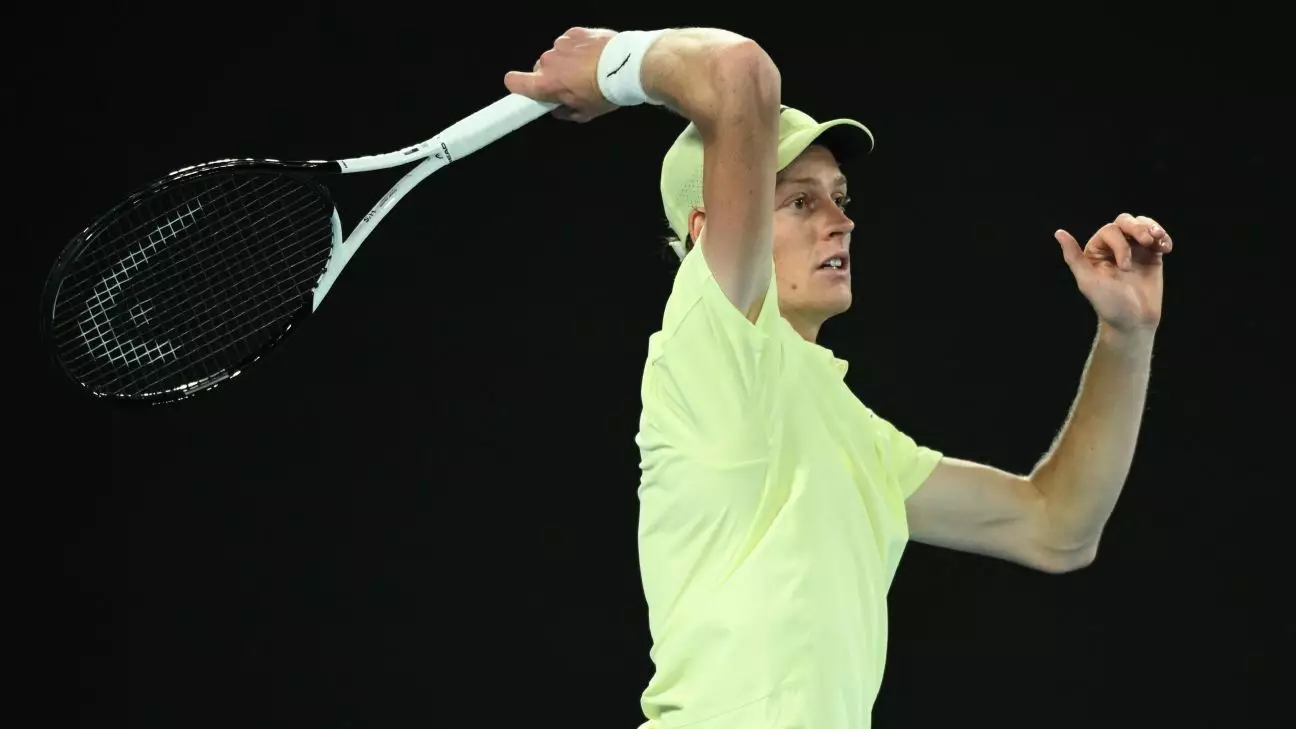Tennis, once seen as a bastion of integrity and athleticism, now finds itself navigating turbulent waters following high-profile doping cases. The recent three-month suspension of rising star Jannik Sinner due to an unintentional doping violation has raised eyebrows and sparked unease among players. This incident serves as a wake-up call for tennis professionals, who are now scrambling to educate themselves on the labyrinth of anti-doping regulations. The implications of Sinner’s case extend beyond him, affecting perceptions of fairness and transparency in the sport altogether.
Sinner’s case began when the World Anti-Doping Agency (WADA) found clostebol—an anabolic agent—in his system, linked to massage treatments. Although the rationale behind his suspension was rooted in contamination rather than deliberate wrongdoing, it illuminated the precarious nature of anti-doping policies that athletes must navigate. Players have begun to recognize that even well-intentioned practices like therapeutic massages might inadvertently expose them to banned substances, leading to severe consequences.
The Dilemmas of Ethical Compliance
The International Tennis Integrity Agency (ITIA) has taken note of the growing fear among players and is ramping up support for them to navigate this complex landscape. However, the ITIA’s reassurance that it aims to maintain fairness raises the question: is the body doing enough to protect players? As more athletes turn to the ITIA for guidance, it begs a deeper inquiry into how doping violations are adjudicated. The belief among some players that Sinner received preferential treatment only adds fuel to the fire of skepticism regarding the integrity of the organization’s decision-making processes.
Moreover, the public outcry from established stars like Novak Djokovic and Nick Kyrgios reflects a growing discontent with perceived discrepancies in the treatment of players. Djokovic’s frustration about being “kept in the dark” illustrates a disconnect between the governing bodies and the athletes they purport to protect. Further complicating matters is the perspective of Serena Williams, who suggested that her own case would have elicited a far harsher punishment had she found herself in a similar position as Sinner. This narrative of double standards has positioned the sport on the brink of a legitimacy crisis, where players and fans alike question the fairness of sanctioning practices.
A Path to Reform and Accountability
While the ITIA claims that all cases are handled based on evidence, the realities of the situation suggest a pressing need for reform. The systemic issues surrounding doping compliance have made it clear that educational resources must be more accessible and robust. Athletes, coaches, and medical staff should possess a comprehensive understanding of what constitutes a doping violation and how to safeguard against unintentional infractions. Until the system is fortified, the specter of doubt will loom over both accused parties and the sport itself.
Additionally, the broader implications of Sinner’s case should trigger a re-evaluation of the doping policies within professional tennis. The gradual shift towards a more holistic approach to doping violations—where intent and context are considered—could serve to promote fairness while still upholding the integrity of the sport. Advocating for transparency in testing methodologies could also bolster trust between players and regulatory bodies.
The Road Ahead: Sinner’s Fight for Redemption
As Sinner prepares to return to competition, the tennis world will be watching closely. His prior accomplishments, including winning the US Open and the Australian Open, may appear overshadowed by controversies. Boasting the world No. 1 ranking, Sinner faces an uphill battle to regain his footing while still grappling with the residue of the doping saga. His statement, acknowledging the challenges that lie ahead, underscores the psychological and emotional toll such incidents can impose on athletes.
Support from fellow competitors, like Rafael Nadal, illustrates the belief that each player deserves the opportunity to focus solely on their craft. Nadal’s affirmation of Sinner as an innocent individual speaks volumes about the importance of community within the sport. A brusque determination to move beyond this cloud of suspicion will be vital for Sinner as he seeks to cast off the baggage of this chapter and concentrate on his future achievements.
Ultimately, the tennis community stands at a crucial juncture. With vigilance in addressing doping practices, the sport can potentially emerge stronger and more united, healing the fractures exposed by recent scandals.

